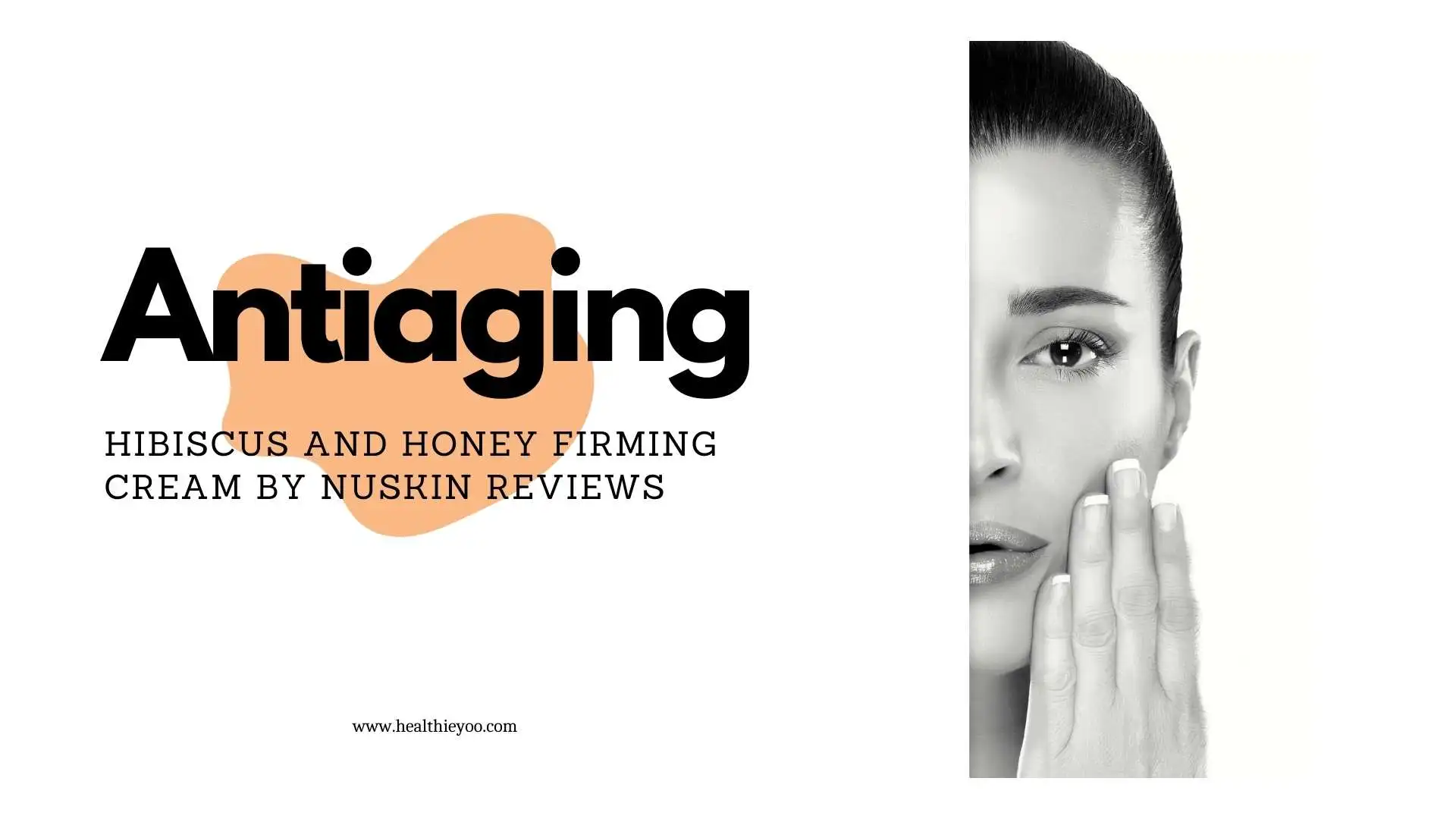ageLOC Dermatic Effects is an anti-cellulite firming cream that promotes skin firmness and reduces the appearance of cellulite. It contains Hibiscus and Honey extracts and ageLOC Proprietary Blend, which work together to inhibit fat production and stimulate fat breakdown. So, here we present the hibiscus and honey firming cream by Nu Skin Reviews, the scientific review of its ingredients and excipients for youthful skin, features, benefits as an anti-aging skin care cream, possible side effects, and precautions.
Size: 6.0 oz (150 ml)
Price: 62$ on Amazon
Hibiscus and Honey Firming Cream By NuSkin Ingredients
We visited the official website of Nu Skin for the ingredients mentioned on the label for Hibiscus and Honey Firming Cream and for ageLOC Dermatic effects. We further reviewed each ingredient for its scientific effects reported for antiaging or skin-firming effects along with the information available on other websites to analyze whether Hibiscus and Honey firming cream by Nu Skin provides what it claims.
Below are the ingredients of the Hibiscus and Honey firming cream by Nu Skin:
Ingredients | |
BLEND | ageLOC Blend |
NATURAL EXTRACTS | Hibiscus Abelmoschus Extract |
Honey Extract | |
Hyaluronic Acid | |
Chenopodium Quinoa Seed Extract | |
Echinacea Purpurea Extract | |
Algae Extract | |
Helianthus annuus (Sunflower) Seed Oil | |
Ilex paraguariensis Leaf Extract | |
Laminaria digitata Extract | |
Aloe barbadensis Leaf Juice | |
EXCIPIENTS | C12-15 Alkyl Benzoate |
Dimethicone | |
Hydroxyethyl Acrylate/Sodium Acryloyldimethyl Taurate Copolymer | |
Ethoxydiglycol | |
Butylene Glycol | |
Cyclopentasiloxane | |
Ethylhexyl Palmitate | |
Polymethyl Methacrylate | |
Palmitoyl Oligopeptide | |
Cetyl Alcohol | |
Cyclohexasiloxane | |
Sodium Hyaluronate | |
PEG-8 | |
PEG-7 Trimethylolpropane Coconut Ether | |
Squalane | |
Steareth-20 | |
Tocopheryl Acetate | |
Sorbitan Isostearate | |
Polyisobutene | |
PEG-75 Stearate | |
Glyceryl Stearate | |
Polysorbate 60 | |
Ceteth-20 | |
Glyceryl Polymethacrylate | |
Disodium EDTA | |
Aminomethyl Propanol | |
Fragrance(Parfum) | |
Phenoxyethanol | |
Chlorphenesin | |
Water |
With such a long list of skincare product ingredients list, understanding the scientific evidence behind each ingredient was a real time-consuming process. While it was indeed a challenge for us, we always kept in mind that the effectiveness of an ingredient can depend on its concentration in the product. Some ingredients may need to be present at a certain percentage to have a noticeable effect.
Scientific Reviews on each Ingredient of Hibiscus and Honey Firming Cream By NuSkin
KEY INGREDIENTS FOR ageLOC DERMATIC EFFECTS
- ageLOC Blend
- Hibiscus Abelmoschus Extract
- Honey extract
- Hyaluronic acid
BLEND
ageLOC Blend- It targets the sources of aging (1).
10 NATURAL EXTRACTS AS HIBISCUS AND HONEY FIRMING CREAM INGREDIENTS REVIEWS
1. Hibiscus Abelmoschus Extract
FGF, or Fibroblast Growth Factor, is a protein that plays a key role in promoting tissue repair and maintaining the health and appearance of skin, hair, and nails. By preventing the natural degradation of FGF-2, Hibiscus Abelmoschus seed extract maintains the bioavailability of this growth factor for its target cells, i.e., skin fibroblasts.
An in vitro study showed that this ingredient exhibited heparan sulfate-like properties and dose-dependently protected FGF-2 from thermal degradation (2).
2. Honey Extract
Honey moisturizes the top layers of your skin and helps to reduce wrinkles and fine lines. It soothes dry, irritated, and wrinkled skin by providing nourishment to it. It also acts as an antioxidant, where it delays the process of aging, and helps you to look younger and more radiant.
Further, Honey has reported antibiotic, anti-inflammatory, antiallergenic, skin tonic, and antiaging properties and is widely used in dermatology and is a common ingredient in cosmetic products (3).
3. Hyaluronic Acid
Hyaluronic acid can increase and maintain skin moisture and help improve dry skin. Owing to its tissue regeneration potential, hyaluronic acid has been frequently employed as one of the ingredients of cosmetics for skin care and antiaging products.
Further, a literature review reported the promising efficacy of hyaluronic acid in skin tightness, elasticity, face rejuvenation, and reduction of wrinkles (4), which agrees with the claims of antiaging and body-firming effects and ageLOC Dermatic effects promised by Hibiscus and Honey firming cream.
4. Chenopodium Quinoa Seed Extract
By stimulating the synthesis of collagen, a major component of the dermis, and due to the presence of bioactives such as protein and amino acids, quinoa seed extract produces skin conditioning effects and helps seal essential moisture. Furthermore, the vitamins present in quinoa seed extract help suppress skin pigmentation and improve complexion. Therefore, this ingredient helps to enhance the look and give a more youthful appearance (5).
5. Echinacea Purpurea Extract
Echinacea purpurea contains many beneficial constituents for the protection of skin from oxidative stress and for improving skin hydration. It is effective in improving skin hydration and reducing wrinkles (6).
6. Algae Extract
Marine algae possess anti-infective, anti-aging, and skin-whitening effects. It is rich in antioxidants, and it can help unclog the pores. Further, it has anti-inflammatory effects and helps inhibit enzymes that break down collagen which helps reduce wrinkles and fine lines (7). Further, some species of algae also offer natural UV protection.
7. Helianthus annuus (Sunflower) Seed Oil
An oil extracted from sunflower seeds is used as an emollient. It moisturizes skin and helps to soothe, nourish, and replenish skin. Helianthus annuus botanical extract has been reported to improve the skin barrier and is considered a dermo-cosmetic for dry skin (8).
8. Ilex paraguariensis Leaf Extract
The leaf extract of Ilex paraguariensis prevents oxidative damage caused by UV radiation (9) thereby producing antiaging effects on skin (9).
9. Laminaria digitata Extract
Laminaria digitata, brown seaweed, is a marine plant extract that contains skin-soothing beta-glucan, polyphenolic antioxidants known as phlorotannins (these help brown seaweed withstand UV exposure), and phloroglucinol, which is responsible for this extract’s skin-calming benefit. These and other antioxidants help support the skin’s firm look and feel, making Laminaria digitata a great option to see in anti-aging products (10).
10. Aloe barbadensis Leaf Juice
What research does confirm about Aloe is that it’s a great moisturizer and has anti-inflammatory and antibacterial properties. It also helps wound healing and skin regeneration in general. It is also a good moisturizer (11).
29 EXCIPIENTS REVIEWS AS INGREDIENTS IN HIBISCUS AND HONEY FIRMING CREAM
1. C12-15 Alkyl Benzoate
C12-15 alkyl benzoate is used as an emollient, skin-softening agent, and for moisture-sealing effect and helps retain moisture for a longer period of time. It is used widely in cosmetics. It is also commonly used as an ingredient in sunscreens (12).
2. Dimethicone
Dimethicone is one of the most common active agents in moisturizers due to its hypoallergenic, noncomedogenic, and non-acnegenic properties. It helps soften the dead skin cells of the skin. It is also used in cosmetics as it increases the stability of creams and lotions (13).
3. Hydroxyethyl Acrylate/Sodium Acryloyldimethyl Taurate Copolymer
Hydroxyethyl acrylate/sodium acryloyldimethyl taurate copolymer is a synthetic polymer that has many uses in cosmetics. It helps increase the stability of cosmetics and is mainly used as a preservative (14).
4. Ethoxydiglycol
Ethoxydiglycol is acknowledged as a safe and well-tolerated solvent that enhances the efficacy, penetration, and texture of skincare products. In the realm of skincare products, it is well-regarded for its role in improving the absorption of vital ingredients (15).
5. Butylene Glycol
Butylene glycol is another moisturizing agent that coats the skin’s surface and prevents water loss. However, few reports of allergic contact dermatitis have been reported (16).
6. Cyclopentasiloxane
Cyclopentasiloxane is commonly used as an emollient and as an antiperspirant. Its other name is Decamethylcyclopentasiloxane (17).
7. Ethyl Hexyl Palmitate
It is used as an emollient and helps to keep the skin moist. Emollients are used to cure dry skin and maintain the smoothness of the skin. It is often used as an organic replacement for silicones in a cosmetic formulation because it provides a dry-slip, silky feel (18).
8. Polymethyl Methacrylate
PMMA is commonly used as a cosmetic ingredient and is used as a fine powder or beads. Sometimes it is used to increase the viscosity. As far as safety is concerned, the FDA safety panel declared them safe to use (19).
9. Palmitoyl Oligopeptide
Palmitoyl oligopeptide is a peptide with antioxidant properties that help protect and restore the skin from damage that results in wrinkles and low elasticity. It has therefore antiaging properties (20).
10. Cetyl Alcohol
Cetyl alcohol is commonly used as an emollient and emulsifier in moisturizers and other cosmetics (21).
11. Cyclohexasiloxane
Cyclomethicones help smooth the texture of products, improve the appearance of scarring, increase the water-resistance abilities of formulations, and emulsify the product (22).
12. Sodium Hyaluronate
Sodium hyaluronate is a derivative of hyaluronic acid. It is widely used in several cosmetics. It is a humectant which means that it helps retain moisture. Recently, it was reported that sodium hyaluronate, when applied to the face, positively impacted facial microflora and skin health (23).
13. PEG-8
Several polyethylene glycols (PEGs) are used as penetration enhancers in topical dermatological products. They are used as emulsifiers, humectants, and skin conditioners. PEG-8 is one such PEG that is used as a solvent for other cosmetic ingredients, helping them penetrate more efficiently.
Though PEG-8 is considered safe for topical use on healthy skin, it may be contaminated with ethylene oxide,1,4 -dioxane which can cause toxicity. PEG-8, therefore, must not be used on sensitive skin (24).
14. PEG-7 Trimethylolpropane Coconut Ether
Type of polyethylene glycol compound derived from coconuts. It acts as an emulsifier and surfactant. (25)
15. Squalene
Squalane, a saturated oil that’s used in skin care products as a moisturizer. Squalene functions in the skin as an antioxidant and protects the skin from harmful exposure to UV and other sources of ionizing radiation (26).
16. Steareth-20
It is added in cosmetic preparations as it’s a cleansing agent and rids the skin of the oil, dirt, and grime accumulated on the skin. It also acts as an emulsifier (27).
17. Tocopheryl Acetate
Tocopheryl acetate is the preferred choice for skincare products. Vitamin E is a well-known antioxidant, that protects the skin from harmful UV rays and promotes the regeneration of healthy cells. (28)
18. Sorbitan Isostearate
Sorbitan Isostearate is widely used in cosmetics as a surfactant, an emulsifier and with conditioning properties. Sorbital esters are considered non-toxic and safe, however, a safety assessment revealed that they may have mild to moderate irritant properties. However, the concentrations generally employed in cosmetics are considered non-irritant (29).
19. Polyisobutene
Polyisobutene is used as an emollient and is used as an ingredient in topically applied cosmetics. One unique characteristic of polyisobutene is that it shows a long-lasting effect in retaining moisture and improving skin texture (30).
20. PEG-75 Stearate
PEG-75 is again a widely used ingredient in cosmetics and skincare products. It is also referred to as PEG-75 Lanolin as it is derived from lanolin. It functions as an emulsifier and surfactant in formulations. Further, PEG-75 Lanolin improves texture and enhances moisturization. It also ensures uniform distribution of other components (31).
21. Glyceryl Stearate
Glyceryl Stearate acts as an emollient. It gives the skin a soft and smooth appearance (32).
22. Polysorbate 60
Polysorbate 60 is a sorbitol-based emulsifier and surfactant. It helps to form emulsions by reducing the surface tension of the substances to be emulsified (33). It is considered as safe to use in cosmetics. However, individual sensitivities and effects may vary.
23. Ceteth-20
Ceteth-20 or Polyoxyethylene 20 cetyl alcohol is a non-ionic surfactant from the polyethylene glycol family. It is used in cosmetics to facilitate the dissolution of other ingredients in a solvent where it would not dissolve otherwise (34).
24. Glyceryl Polymethacrylate
Glyceryl Polymethacrylate can help to reconstruct the dermis and increase skin firmness and contains a natural fragment of elastin. It can also be used to fight premature aging and maintain the skin’s resistance and integrity (35).
25. Disodium EDTA
Disodium EDTA (ethylenediaminetetraacetic acid) is a water-soluble acid that is a strong emulsion stabilizer with chelating properties. In skincare, this helps to prevent cosmetic formulations from deteriorating. It is also used as a disinfectant and preservative (36).
26. Aminomethyl Propanol
It is used to adjust and control the pH of a formulation. Also, it enhances the penetration of other skincare ingredients and makes them more effective. It is considered to be safe for skin in 2% concentration or less (37).
27. Fragrance (Parfum)
Fragrance, also commonly listed as perfume or parfum, is a mix of synthetic ingredients or essential oils. It has been added additionally to alter the smell of the product.
28. Phenoxyethanol
This ingredient is known to prevent the growth of bacteria and help enhance the shelf life of the products. Further, it increases product stability because it doesn’t react with other ingredients, air, or light (38).
29. Chlorphenesin
Chlorphenesin is a synthetic preservative used in skin care. It helps prevent bacteria contamination, which helps to prolong product longevity. The cosmetic ingredients expert panel recommended it as a safe ingredient (39).
Key Features and Benefit Reviews of Hibiscus and Honey Firming Cream By NuSkin
Addresses Root Cause of Aging Process
ageLOC is designed to address the root causes of aging in order to maintain a youthful appearance and diminish the signs of the aging process.
Improves Skin Texture and Firmness
It aids in the refinement of skin texture, and enhances skin firmness, creating a more youthful appearance.
Optical Technology Benefiting the Skin
Furthermore, its optical technology promptly scatters light to provide the skin with a smoother look and enhance its surface.
Hydration Effect
Additionally, it offers hydration and contributes to the smoothing of the skin.
What is the benefit of using ageLOC Dermatic Effects every day?
ageLOC Dermatic Effects is a daily moisturizing lotion that enhances skin’s smoothness. It facilitates the natural turnover of skin cells, promoting a radiant texture. Moreover, it incorporates technology to instantaneously disperse light, leading to a smoother skin appearance and an improved skin surface. Crafted with ageLOC ingredients, this product offers a daily, consistent supply of ageLOC for skin that appears more contoured, smoother, and firmer (1). The benefits are also evident from Hibiscus and Honey Firming Cream reviews.
How to use Hibiscus and Honey Firming Cream?
We have seen above why to use Hibiscus and Honey Firming Cream and reviews of its ingredients. Let us now understand how to use it.
For optimal results, it is recommended to apply this product twice daily, both in the morning and at night, to the targeted areas, which include the upper arms, thighs, buttocks, and/or abdomen. To maximize the benefits, consider incorporating it into your ageLOC Body Shaping Gel regimen (1).
Are there any side effects?
When it comes to writing reviews about Hibiscus and Honey Firming Cream, we need to present both sides of the coin. While we have discussed the safety of each ingredient and excipients under ingredient reviews, as per the official website, there are no known side effects. However, if you find yourself experiencing any kind of irritation or sensitivity, we recommend discontinuing use and speaking to your dermatologist. Also, one has to keep the following in mind while using any skincare product including the hibiscus and honey firming cream.
Check for Allergens or Irritants:
Also, be sure to check if any of the ingredients are known allergens or irritants. Skin reactions can vary from person to person, so it’s important to know if there are any potential risks.
Look for Independent Reviews:
Seek out independent reviews and testimonials from users who have tried the products. This can provide valuable insights into real-world experiences with the products.
Consult with a Dermatologist:
If you have any specific skin concerns or conditions, it’s a good idea to consult with a dermatologist. They can provide personalized advice and may be familiar with the ingredients in these products.
Consider Your Skin Type:
Remember that the effectiveness of skincare products can vary depending on your skin type. What works well for one person may not work the same way for another.
Analyzing skincare product claims and ingredients can be a complex process, but it’s important to make informed decisions about the products you use on your skin. Keep in mind that individual results may vary, and it’s always a good idea to perform a patch test when trying a new skincare product, especially if you have sensitive skin.
Conclusion
In conclusion, HIBISCUS AND HONEY FIRMING CREAM is an herbal-based skincare cream. It incorporates a mixture of natural ingredients and excipients to prolong the effects of herbal extracts on the skin. If you are in search of a reliable and effective skincare regimen, HIBISCUS AND HONEY FIRMING CREAM by Nuskin could be a valuable addition to your wellness routine. While the product does not make any specific claims regarding potential side effects, it is advisable to consult with your dermatologist if you have any concerns about allergies related to the product’s ingredients.
References
- https://www.nuskin.com/us/en/product/ageloc-dermatic-effects-10pk-US
- https://pubmed.ncbi.nlm.nih.gov/19849726/
- https://pubmed.ncbi.nlm.nih.gov/32012913/
- https://pubmed.ncbi.nlm.nih.gov/30287361/
- https://www.ijsdr.org/papers/IJSDR1905079.pdf
- https://pubmed.ncbi.nlm.nih.gov/20384903/
- https://pubmed.ncbi.nlm.nih.gov/28697977/
- https://pubmed.ncbi.nlm.nih.gov/21709432/
- https://pubmed.ncbi.nlm.nih.gov/24361697/
- https://www.paulaschoice.com/ingredient-dictionary/ingredient-laminaria-digitata-extract.html
- https://www.ncbi.nlm.nih.gov/pmc/articles/PMC7144722/
- https://www.paulaschoice.com/ingredient-dictionary/ingredient-c12-15-alkyl-benzoate.html
- https://www.ncbi.nlm.nih.gov/pmc/articles/PMC9315586/
- https://pubmed.ncbi.nlm.nih.gov/31041411/
- https://www.paulaschoice.com/ingredient-dictionary/ingredient-ethoxydiglycol.html
- https://pubmed.ncbi.nlm.nih.gov/32342510/
- https://pubmed.ncbi.nlm.nih.gov/23186890/
- https://thedermreview.com/ethylhexyl-palmitate/
- https://journals.sagepub.com/doi/epdf/10.1177/1091581811407352
- https://www.ncbi.nlm.nih.gov/pmc/articles/PMC4950680/
- https://www.mdpi.com/2079-9284/9/3/61
- https://thedermreview.com/cyclohexasiloxane/
- https://pubmed.ncbi.nlm.nih.gov/36710533/
- https://cosmetics.specialchem.com/inci-ingredients/peg-8
- https://www.paulaschoice.com.au/ingredient-dictionary/ingredient-peg-7-trimethylolpropane-coconut-ether.html
- https://pubmed.ncbi.nlm.nih.gov/9988781/
- https://motherfigure.com/safe-skincare/steareth-20/
- https://www.ncbi.nlm.nih.gov/pmc/articles/PMC4976416/
- https://pubmed.ncbi.nlm.nih.gov/12042063/
- https://pubmed.ncbi.nlm.nih.gov/19296892/
- https://cosmetics.specialchem.com/inci-ingredients/peg-75
- https://www.cosmeticsinfo.org/ingredients/glyceryl-stearate/
- https://www.ewg.org/skindeep/ingredients/705139-POLYSORBATE60/
- https://cosmetics.specialchem.com/inci-ingredients/ceteth-20
- https://www.truthimcom/ingredients/glyceryl-polymethacrylate
- https://pubchem.ncbi.nlm.nih.gov/compound/Disodium-EDTA
- https://www.paulaschoice.com/ingredient-dictionary/ingredient-aminomethyl-propanol.html
- https://www.byrdie.com/phenoxyethanol-for-skin-4707740
- https://pubmed.ncbi.nlm.nih.gov/24861369/
Affiliate Disclosure – Many products or services or content featured on this website are advertising which means we get a commission if purchases are done through links on our website. Further, we disclose that some of the links in the above post may be sales or affiliate links, and we might receive compensation if you click on them to purchase through them. As an Amazon associate, we earn from qualifying purchases. We do not endorse the advertisements or product reviews published on our website.
Disclosure – The products/services belong to a third party, and we have neither used nor endorsed any products/services and we may even get compensation for publishing it. Hence, we disclaim any and all liability to any party, person, company, or product for any direct, indirect, implied, punitive, special, incidental, or consequential damages arising either directly or indirectly due to the use of content published in this article. The publishers of this website take no responsibility for any health issues, personal injury, death, disability, or any other harm due to the content on our website or any advice or opinion expressed on our website. Please consult your healthcare professional before consuming any supplement, or using any product/treatment or following any fitness program. Please also read our medical disclaimer.
Related Posts
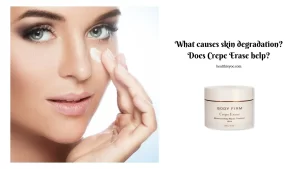
Crepe Erase Reviews, Ingredients: Nourish Your Skin, Reclaim Your Radiance
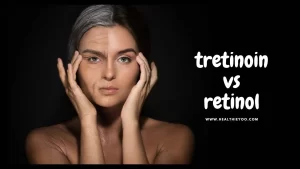
Tretinoin vs Retinol – Which retinoid safer to prevent skin aging?
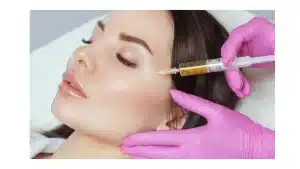
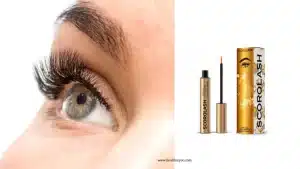
Scorolash Reviews – Is the Eyelash Growth Serum Worth the Hype?



